Moving day looms on the horizon. Your belongings are scattered around you, and the daunting task of packing it all up feels overwhelming. Sound familiar? If you're embarking on a DIY move, you're not alone. One of the most crucial decisions you'll face is selecting the right truck size to accommodate all your possessions. Get it wrong, and you could be facing multiple trips, added expenses, or even damaged items. But fear not! This comprehensive guide will walk you through the process of choosing the perfect truck size and offer expert packing tips to ensure your move is as smooth as possible.
Understanding Truck Sizes: The Key to a Successful Move

The Importance of Proper Sizing
Selecting the appropriate truck size is critical for a successful self-move. It's a balancing act - too small, and you might find yourself making multiple trips or leaving items behind; too large, and you risk items shifting during transit, potentially causing damage. Let's explore the factors you should consider when selecting your moving truck.
Factors to Consider
- Home Size: The number of rooms in your current home is a good starting point. Industry experts suggest that each room typically requires about 150-300 cubic feet of truck space.
- Volume of Belongings: Take an honest inventory of your possessions. Are you a minimalist, or do you have a house full of furniture and knick-knacks?
- Large Items: Don't forget to account for bulky items like mattresses, couches, and appliances. These can quickly eat up space in a moving truck.
- Distance of the Move: For longer moves, you'll want to ensure everything fits in one trip to avoid additional costs and time.
Truck Size Guide
Here's a quick reference guide based on industry standards to help you estimate the truck size you might need:
- 10-12 foot truck: Suitable for a studio or small 1-bedroom apartment (up to 450 cubic feet)
- 15-16 foot truck: Ideal for a 2-3 bedroom apartment (up to 800 cubic feet)
- 20-22 foot truck: Perfect for a 3-4 bedroom house (up to 1,200 cubic feet)
- 26 foot truck: Best for a 4-5 bedroom house (up to 1,700 cubic feet)
Remember, it's always better to err on the side of caution and choose a slightly larger truck than you think you'll need. This extra space can be a lifesaver when it comes to last-minute items or awkwardly shaped furniture.
Packing Strategies: Maximizing Space and Ensuring Safety
The Art of Efficient Packing
Efficient packing is not just about fitting everything into boxes; it's about maximizing space, ensuring the safety of your belongings, and making the unpacking process as smooth as possible. Here are some proven packing strategies:
- Start Early: Begin packing non-essential items weeks before your move. This gives you time to declutter and organize as you go.
- Use Appropriate Boxes: Invest in sturdy boxes of various sizes. Medium boxes with handle holes are great for larger items, while banker's boxes work well for books and paperwork.
- Label and Color Code: Clearly label each box with its contents and the room it belongs in. Consider using a color-coding system for easy identification.

- Pack Strategically: Load heavier items at the bottom of boxes and trucks, with lighter items on top to prevent crushing.
- Utilize Garbage Bags for Clothes: For hanging clothes, use garbage bags with a hole cut in the top for hangers. This keeps clothes clean and makes for easy transport.
- Create an Essentials Box: Pack a box with items you'll need immediately upon arrival at your new home. This might include toiletries, a change of clothes, and basic kitchen supplies.
Maximizing Truck Space
When it comes to loading the truck, think of it as a giant game of Tetris. Here's a step-by-step guide to make the most of your space:
- Load Furniture First: Start with large, heavy items like sofas and mattresses. Place them against the walls of the truck for stability.
- Fill in Gaps: Use smaller boxes and soft items like pillows to fill in gaps between larger items.

- Use Vertical Space: Stack boxes to the ceiling, but ensure heavier items are on the bottom.
- Disassemble What You Can: Take apart furniture like bed frames and tables to save space.
- Utilize Hollow Spaces: Fill drawers and appliances with smaller items to maximize space.
Common Challenges and How to Overcome Them
Underestimating Space Requirements
One of the most common pitfalls in DIY moving is underestimating the amount of space needed. To avoid this, use online truck size calculators provided by rental companies. These tools take into account the number of rooms and types of furniture you have to provide a more accurate estimate.
Time Management
Packing always takes longer than you think. Create a timeline for your move, allocating specific days for packing each room. Stick to your schedule to avoid last-minute rushes.
Fragile Items
Proper packing of delicate items is crucial. Invest in bubble wrap and packing paper for your fragile belongings. For extra protection, use towels and blankets as additional padding.
Expert Recommendations for a Smooth Move
- Declutter Before You Pack: Take this opportunity to get rid of items you no longer need. This reduces the volume of items to move and can save you money on truck rental.
- Enlist Help: Don't hesitate to ask friends and family for assistance. More hands make light work, especially when it comes to heavy lifting.
- Stay Organized: Keep important documents and valuables with you rather than packing them in the truck.
- Be Prepared for the Unexpected: Pack a first-aid kit and keep extra packing supplies on hand for last-minute items.
- Take Care of Yourself: Moving is physically demanding. Stay hydrated, take breaks, and don't push yourself too hard.
Embarking on a DIY move can be challenging, but with the right preparation, it can also be a rewarding experience. By choosing the appropriate truck size and employing efficient packing strategies, you can ensure a smoother, less stressful relocation. Remember, successful self-moving hinges on careful planning, smart packing, and staying organized throughout the process.
Use this guide as your roadmap to a successful move. From selecting the right truck size to packing your last box, you're now equipped with the knowledge to tackle your relocation with confidence. Happy moving!


